Boxes and signatures
A box represents any process with systems as input and output.
A (monoidal) signature
- a pair of classes
- a pair of maps
Morphisms of signatures
Given a signature
Given two signatures
a morphism
such that for all boxes
Diagrams: definition
Given a signature
- every box
- the identity
- so is the composition
- and the tensor
Diagrams: definition
Diagrams are subject to three axioms.
- Tensor and composition are associative and unital.
- They satisfy the following naturality equation.
From a signature
Diagrams: cooking
Can't be bothered to remember the axioms for diagrams? Your visual cortex has them built in!
- Wires are ingredients.
- Boxes are cooking steps.
- Diagrams are recipes.
In physical terms, naturality means parallel processes are spacelike-separated events.
Diagrams: quantum
Quantum gate sets are signatures!
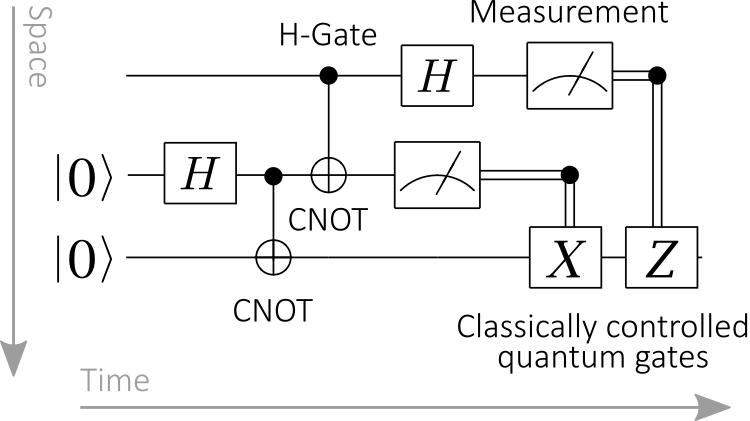
- Wires are bits and qubits.
- Boxes are quantum gates
and measurements. - Diagrams are circuits.
Diagrams: grammar
- Chomsky, Syntactic Structures (1957)
Formal grammars are signatures!

- Wires are grammatical types.
- Boxes are grammatical rules.
- Diagrams are grammatical structures.
Diagrams: grammar
- Lambek, The mathematics of sentence structure (1958)
- Joachim Lambek, Type grammar revisited (1997)
- Clark, Sadrzadeh & Coecke, DisCoCat (2008)
Categories: definition
A (strict monoidal) category
such that associativity, unitality and naturality hold. For example:
Categories: theorem
A (strict monoidal) functor
Theorem (Joyal & Street, 1988):
Intuition: The functors
Categories: grammar
- Montague, English as a formal language (1974)

Natural language semantics as a functor
Categories: grammar
- Coecke, Sadrzadeh & Clark, Mathematical Foundations for a Compositional Distributional Model of Meaning (2010)
DisCoCat models are functors
Categories: quantum
- Abramsky & Coecke, Categorical quantum mechanics (2008)
A categorical semantics of quantum protocols (2004)

The principles of quantum theory as properties of the category
Categories: symmetric
A category is symmetric if it comes with swaps.
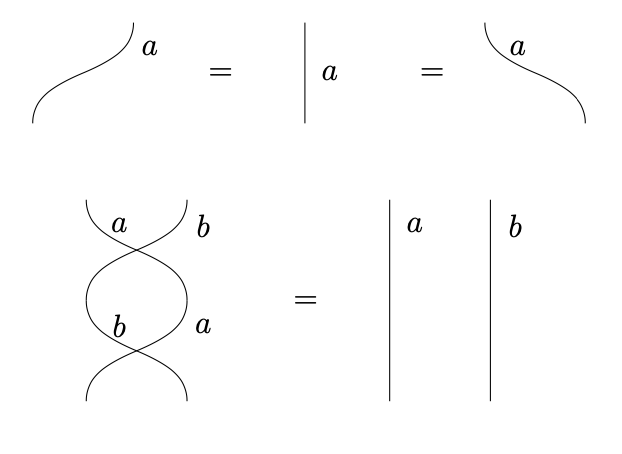
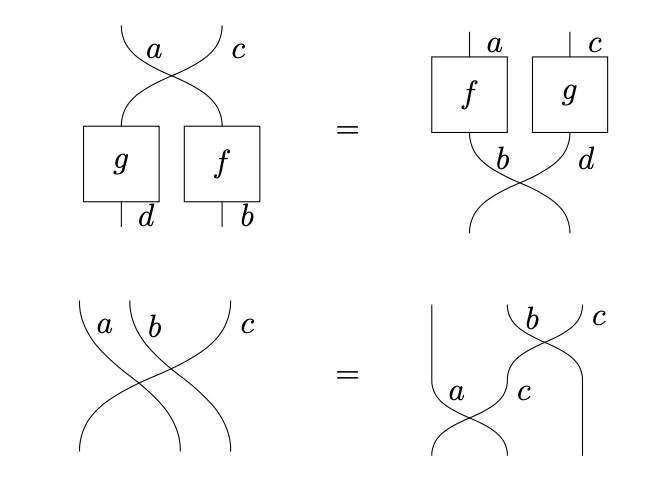
Categories: compact
A symmetric category is compact if it comes with cups and caps. 
Entanglement is "the characteristic trait of quantum mechanics".
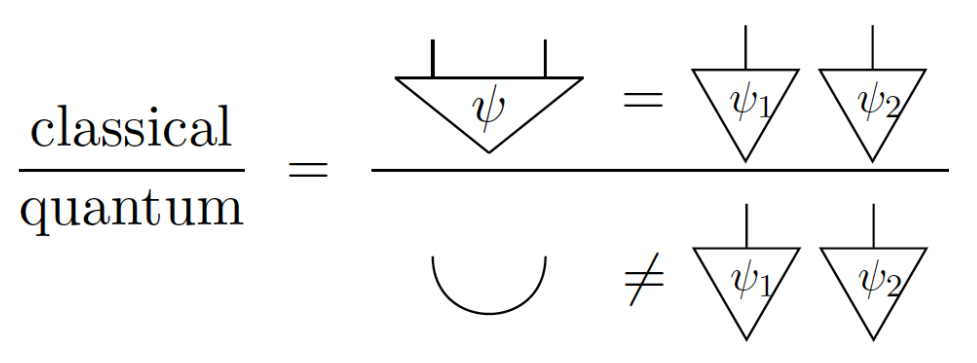
Categories: cartesian
A symmetric category is cartesian if it has copy and discard.


In physical terms, the last equation (again called naturality) is equivalent to causality: the future cannot influence the past.
Categorical no-deleting
Theorem:
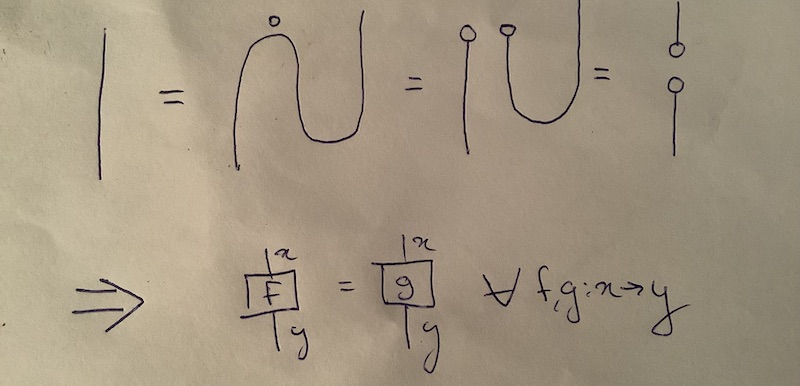
- Abramsky, No-cloning in categorical quantum mechanics (2009)
- Heunen & Vicary, Categories for Quantum Theory (2019)
Categorical no-cloning
Lemma: Suppose a symmetric category has both cups and copy.
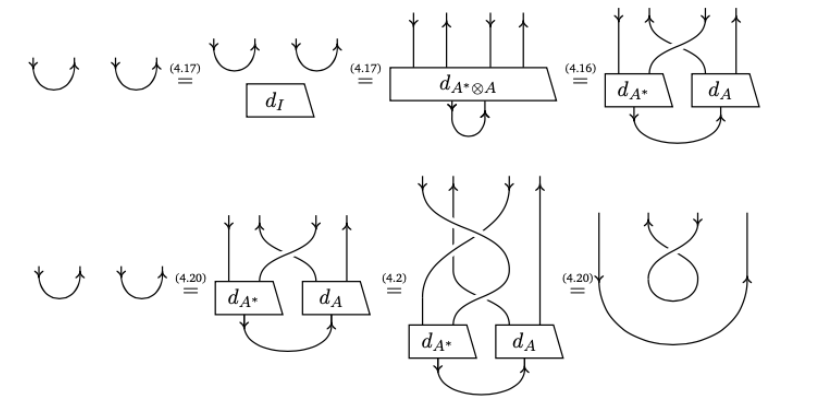
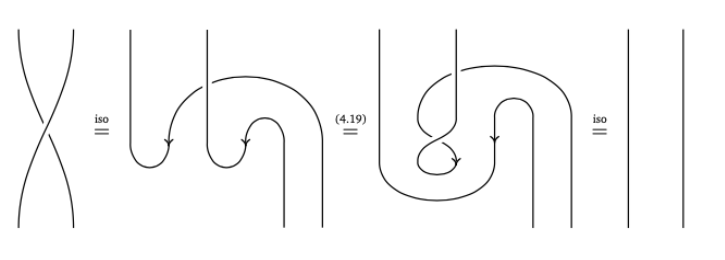
Categorical no-cloning
Theorem:

ZX-calculus
Applications:
- circuit simplification
- circuit compilation
- error correction
- ...
- quantum natural language processing!
QNLP: recipe
Three ingredients
Three steps
- Parse the text to get a diagram
- Map it to quantum with a functor
- Tune parameters to solve NLP tasks (e.g. question answering)
QNLP: definition
We define a QNLP model as a monoidal functor
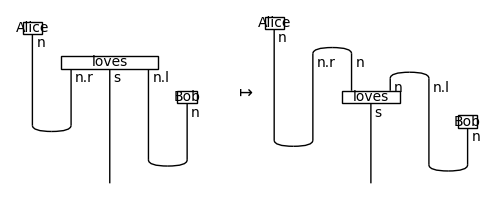
- Zeng & Coecke, Quantum algorithms for compositional natural language processing (2016)
- Wiebe et al., Quantum language processing (2019)
QNLP: implementation
We define a QNLP model as a monoidal functor
from discopy import Ty, Word, Id, Cup
from discopy.circuit import Functor
from discopy.quantum import qubit, Ket, H, X, CX, sqrt
s, n = Ty('s'), Ty('n')
Alice, loves, Bob = Word('Alice', n), Word('loves', n.r @ s @ n.l), Word('Bob', n)
sentence = Alice @ loves @ Bob >> Cup(n, n.r) @ Id(s) @ Cup(n.l, n)
F = circuit.Functor(
ob={s: Ty(), n: qubit},
ar={Alice: Ket(0), loves: sqrt(2) @ Ket(0, 0) >> H @ X >> CX, Bob: Ket(1)})
assert F(sentence).eval()
QNLP: training
We define a QNLP model as a parameterised monoidal functor:
Given a dataset
We call this approach functorial learning, a new category-theoretic approach to structured machine learning.
Diagrammatic Differentiation for Quantum Machine Learning
joint work with Richie Yeung and Giovanni de Felice

DisCoPy: the Python toolkit for computing with string diagrams
